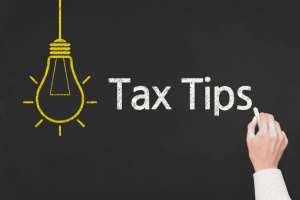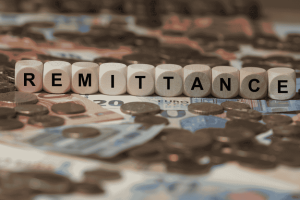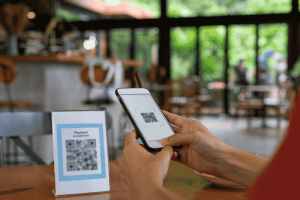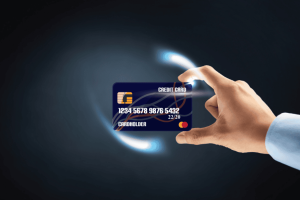Living paycheck to paycheck can feel like being trapped on a financial treadmill—running constantly but never moving forward. If you’re among the millions who find their bank account approaching zero before each payday, you’re not alone. This financial situation affects people across all income levels and can create significant stress and anxiety. But there’s good news: with strategic planning, disciplined habits, and the right mindset, you can break free from this cycle and build financial stability.
Understanding the Paycheck-to-Paycheck Reality

Before diving into solutions, it’s important to recognize that living paycheck to paycheck isn’t simply a matter of poor money management. Economic factors like stagnant wages, rising living costs, unexpected expenses, and systemic inequalities all contribute to this widespread challenge.
The numbers tell a sobering story: Recent surveys indicate that approximately 64% of working adults live paycheck to paycheck, including many who earn six-figure salaries. This isn’t just a low-income problem—it’s a cash flow and financial planning issue that crosses economic boundaries.
Reality check: Living paycheck to paycheck means you’re one unexpected expense away from financial hardship. This precarious position limits your options and increases your vulnerability to debt cycles.
First Steps: Creating Financial Breathing Room
When you’re caught in the paycheck-to-paycheck cycle, your immediate goal should be creating some financial breathing room. Here’s how to start:
1. Perform a Financial Triage
Before making any changes, you need a clear picture of your current situation:
- Track every expense for at least two weeks (preferably a full month)
Use an app, spreadsheet, or notebook to record everything—from large bills to small daily purchases. - Categorize your spending into three groups:
- Needs: essentials like rent, groceries, and utilities
- Wants: dining out, subscriptions, and entertainment
- Obligations: debts, installments, and recurring payments
- Identify spending leaks where money disappears without real value, such as:
- Unused subscription services
- Impulse buys
- Frequent convenience purchases like ready-made meals
- Calculate your true hourly wage (after taxes and work-related expenses) to understand the real value of your time.
This process often uncovers surprising patterns. Many people find they’re spending significant amounts on subscription services they rarely use, convenience foods that could be prepared more economically at home, or impulse purchases that provide little lasting satisfaction.
2. Build a Bare-Bones Budget
When financial survival is your priority, you need a stripped-down budget focused on essentials:
| Category | Strategy |
| Housing | Should not exceed 30% of take-home pay |
| Food | Focus on home cooking with affordable, nutritious ingredients |
| Transportation | Evaluate cheaper alternatives to your current method |
| Utilities | Implement energy-saving measures to reduce costs |
| Debt Payments | Make minimum payments while you stabilize (we’ll address debt more thoroughly later) |
| Emergency Fund | Start with a modest goal of $500-1,000 |
Action step: Create two budget versions—your current reality and a “survival budget” that cuts all non-essentials. The difference between these numbers represents potential savings you could redirect toward breaking the paycheck cycle.
3. Find Quick Wins to Increase Cash Flow
Look for immediate opportunities to improve your cash position:
- Adjust tax withholdings if you typically receive large tax refunds
- Sell unused items around your home
- Check for unclaimed money through your state’s unclaimed property office
- Negotiate bills like insurance, phone plans, and internet service
- Cancel or pause subscriptions you can live without temporarily
- Look for side hustle opportunities that match your skills and available time
Even small improvements to your cash flow can provide the psychological boost needed to tackle bigger financial challenges.
Addressing the Income Side of the Equation
While controlling expenses is crucial, increasing your income often provides the fastest path to financial stability.
Maximize Your Current Employment Value
Before seeking new job opportunities, make sure you’re extracting the maximum value from your current position:
- Request a performance review and salary discussion: Prepare your achievements and contributions to build a strong case.
- Research market rates: Understand the going rate for your role in your industry and region to support your negotiation.
- Pursue additional training or certifications: Identify skills your employer values and invest in gaining them to increase your worth.
- Volunteer for overtime or extra responsibilities: Taking on more tasks can position you for promotions or bonuses.
- Fully utilize employee benefits: Take advantage of retirement matching programs, health savings accounts, tuition reimbursement, or other perks your employer offers to boost your overall compensation.
Develop Additional Income Streams
Diversifying your income provides both immediate financial relief and long-term stability:
- Skills-based side hustles: Use your professional skills for freelance or consulting work (writing, graphic design, coding, marketing).
- Service-based opportunities: Explore gig economy jobs like delivery, rideshare driving, tutoring, pet sitting, or handyman services.
- Asset utilization: Rent out underused resources such as a spare room on Airbnb, a parking spot, or your vehicle.
- Creative endeavors: Sell handmade crafts, digital art, photography, or monetize content via platforms like YouTube or Etsy.
- Passive income development: Start building income sources that require less ongoing effort, such as dividend stocks, rental properties, or digital products.
Pro tip: When considering side hustles, calculate your effective hourly rate after deducting expenses and taxes. Prioritize opportunities that provide the best balance between income, time investment, and sustainability.
Strategic Debt Management
Debt payments can consume a large portion of your income, trapping you in the paycheck-to-paycheck cycle. Taking a strategic approach to managing debt is crucial for achieving long-term financial stability.
Prioritize Debts Effectively
Not all debts carry the same weight or urgency. Prioritize your debts based on your current financial situation:
- Struggling to make minimum payments? Focus on avoiding defaults and late fees to protect your credit score.
- Making payments but not reducing balances? Choose a payoff strategy:
- Avalanche method: Pay off debts with the highest interest rates first to minimize overall interest.
- Snowball method: Pay off the smallest balances first to gain momentum and motivation.
- Crushed by high-interest debt? Look into debt consolidation or refinancing options to lower your interest rates and monthly payments.
Negotiate with Creditors
Many creditors would rather negotiate than deal with defaults:
- Request hardship programs or payment plans if you’re facing temporary financial challenges.
- Ask for interest rate reductions on credit cards, especially if you have a solid payment history.
- Explore settlement offers for older debts or collections to reduce what you owe.
- Consider consulting non-profit credit counseling agencies for expert guidance on managing and negotiating your debts.
Avoid Debt Traps
While managing existing debt, be cautious to avoid falling into new debt traps:
- Payday loans and high-interest advances: These often create cycles of dependency that worsen your financial situation.
- Rent-to-own agreements: They typically result in paying far more than the actual value of items.
- “Buy now, pay later” services: These encourage impulse purchases and can lead to accumulating more debt than you can handle.
- Using credit cards for everyday expenses: Avoid relying on credit for recurring costs you can’t pay off monthly, as this adds up quickly and leads to interest charges.
Building Financial Resilience

Breaking the paycheck-to-paycheck cycle isn’t just about surviving this month—it’s about creating systems that prevent you from returning to financial precarity.
Create an Emergency Fund Buffer
An emergency fund is your critical first defense against slipping back into paycheck-to-paycheck living:
- Start Small: Build a mini emergency fund of $500 to $1,000 while you’re still paying off high-interest debt. This small cushion can cover unexpected expenses and prevent new debt.
- Gradually Grow: Once the mini fund is established, aim to save one full month’s worth of essential expenses. Then work toward three months, and eventually build up to six months of living costs.
- Automate Savings: Set up automatic transfers from your checking account to your emergency savings to make saving effortless and consistent.
- Accessibility Balance: Keep your emergency fund accessible enough to use when truly needed but not so easy to spend impulsively—consider a separate savings account without a linked debit card or immediate online access.
Implement Financial Systems That Work for You
Building effective financial systems is key to turning good intentions into lasting money habits. Automating bill payments helps you avoid late fees and protects your credit score by ensuring timely payments. Opening separate accounts for different purposes—such as bills, savings, and discretionary spending—can greatly improve your budgeting clarity and control.
To manage overspending, consider using cash envelopes or digital budgeting apps, especially for categories where you tend to go over budget. Additionally, scheduling regular financial reviews, whether monthly or quarterly, keeps you aware of your progress, helps you adjust goals as needed, and maintains your motivation on the path to financial stability.
Develop New Money Habits
Sustainable financial health depends on shifting from reactive spending to proactive money management:
- Apply the 24-Hour Rule: Wait 24 hours before making any non-essential purchase to avoid impulse buys.
- Practice Gratitude: Regularly reflect on what you already have to reduce the urge to spend unnecessarily.
- Explore Low-Cost Alternatives: Find free or affordable entertainment and social activities that fit your budget.
- Build a Support Network: Surround yourself with friends or communities who share your financial goals for encouragement and accountability.
- Celebrate Wins: Recognize and reward yourself for financial milestones, no matter how small, to reinforce positive behaviors.
Navigating Specific Challenges
For Families with Children
Families often face extra expenses and pressure to spend. To ease this, involve children in age-appropriate financial discussions to help them understand money’s value and reduce demand for unnecessary purchases. Explore government assistance programs you may qualify for to provide extra support. Consider swapping childcare duties with other families to cut costs, and seek out free or affordable activities offered through community centers, libraries, and schools. Additionally, cooperative purchasing with other families can unlock bulk discounts, lowering expenses on essentials.
| Strategy | Benefit |
|---|---|
| Child financial talks | Reduces pressure to spend |
| Government assistance | Provides financial relief |
| Childcare exchange | Lowers childcare costs |
| Free community activities | Affordable entertainment |
| Cooperative buying | Saves money on bulk purchases |
For Single-Income Households
Single-income households carry higher financial risk, so preparing is key. Building a stronger emergency fund ensures you have a buffer if income is interrupted. Income protection insurance offers security to the sole earner against unforeseen events. Empower the non-working partner by developing marketable skills that could provide additional income if needed. Also, create a detailed succession plan for household management to ensure smooth operations if the primary earner becomes unable to work.
- Key Focus Areas:
- Emergency fund: Aim for 6+ months of expenses.
- Income protection: Insurance safeguards income flow.
- Skill development: Backup income potential.
- Succession planning: Covers household responsibilities.
For Gig Workers and Variable Income Earners
With fluctuating income, budgeting becomes a challenge. First, calculate your average monthly income over the past 6 to 12 months. Then, create your budget based on your lowest earning month to avoid overspending during slow periods. Establish an “income smoothing” account where you deposit extra earnings from high-income months to cover expenses in leaner times. Diversify your income by developing multiple streams across different platforms or industries to reduce dependence on any single source.
| Step | Action |
|---|---|
| Calculate average income | Use past 6–12 months for accuracy |
| Budget conservatively | Plan using lowest-earning month |
| Income smoothing fund | Save excess during good months |
| Diversify income streams | Create multiple earning opportunities |
Each situation demands a tailored approach, but by combining thoughtful planning, strategic resource use, and flexibility, you can steadily move away from living paycheck to paycheck.
Long-Term Strategies for Financial Freedom
Once you’ve created some financial breathing room, it’s time to implement strategies that build lasting wealth and independence. Start by investing in your earning potential—your most valuable financial asset. This includes:
- Pursuing education or specialized training to increase your market value
- Developing skills that command premium compensation
- Building a professional network to unlock better opportunities
- Exploring entrepreneurial ventures tailored to your unique abilities
At the same time, begin investing, no matter how small your contributions:
| Investment Strategies | Tips |
|---|---|
| Employer retirement matching | Maximize contributions to take full advantage |
| Low-cost index funds | Start with what you can afford and grow steadily |
| Tax-advantaged accounts | Research options like IRAs or 401(k)s |
| Automated contributions | Set it and forget it for consistent investing |
Finally, focus on creating multiple income streams to increase financial resilience:
- Develop both active and passive income sources
- Reinvest earnings from side hustles to grow passive income opportunities
- Consider dividend-producing investments for steady cash flow
- When ready, explore small-scale real estate investments
By combining personal development, smart investing, and diversified income, you can steadily move toward true financial freedom.
Conclusion: From Survival to Thriving

Breaking free from the paycheck-to-paycheck cycle is a journey that requires patience, discipline, and strategic thinking. Remember that financial progress rarely follows a straight line—there will be setbacks and challenges along the way. What matters most is your commitment to continuing forward, learning from experiences, and gradually building the financial foundation that supports the life you want.
The strategies outlined in this guide provide a roadmap, but your specific path will depend on your unique circumstances, priorities, and goals. Start with the steps that address your most pressing challenges, then gradually implement additional strategies as your situation improves.
Financial freedom isn’t just about having more money—it’s about having more choices, more security, and more peace of mind. By taking consistent action to break the paycheck-to-paycheck cycle, you’re investing in a future where money serves your goals rather than constraining your possibilities.
What’s one small step you can take today to begin breaking your paycheck-to-paycheck cycle? Share your commitment in the comments below, and let’s support each other on the journey to financial stability!









